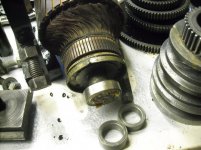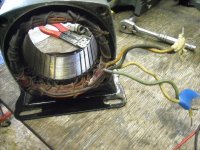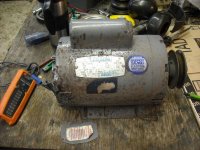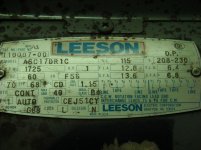grannyknot
Aluminum
- Joined
- Oct 18, 2015
 The motor that came with the 9C I just bought has had the data plate removed. The PO said he use to run it on 3 ph but changed to 1 ph years ago. It has no starting coil attached.
The motor that came with the 9C I just bought has had the data plate removed. The PO said he use to run it on 3 ph but changed to 1 ph years ago. It has no starting coil attached.So it has 4 wires coming out of the coils, white, black,
green and orange. White/green and orange/black is how it came from PO and is the quietest and fastest starting of all of the combinations.
The combo of black/green with the white 120v wire and
white/orange with the black 120v wire is the only combo that will turn in the reverse direction if I get the shaft spinning in reverse before I apply power but it won't turn in reverse by itself. That combo is also kinda slow to get up to speed and is louder(not a good sound).
Does this sound like a motor that will reverse reliably?









